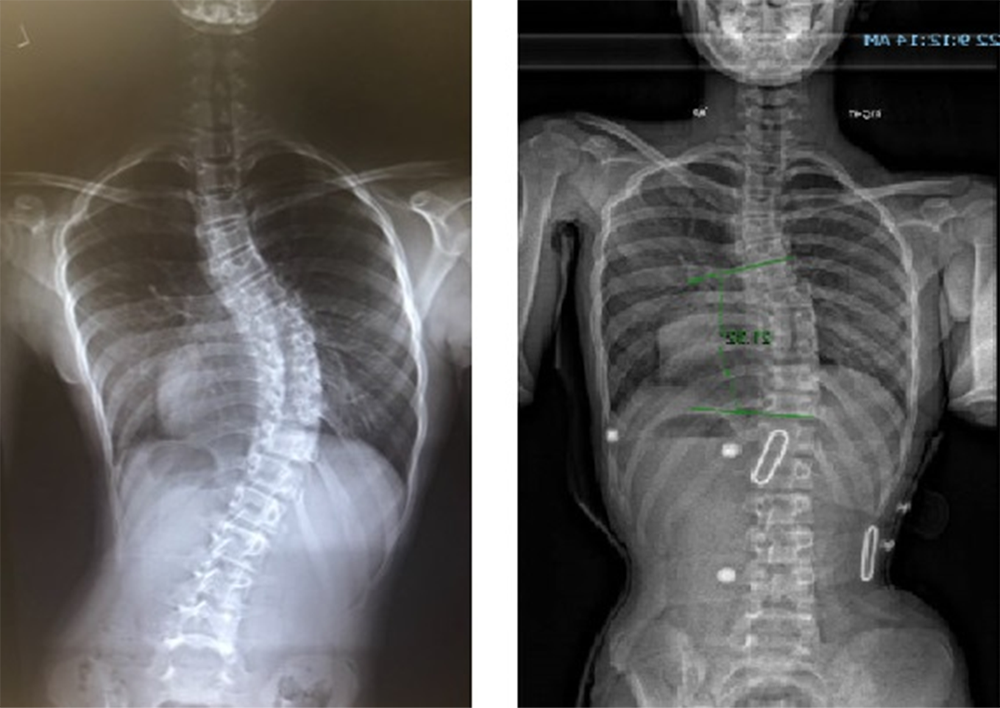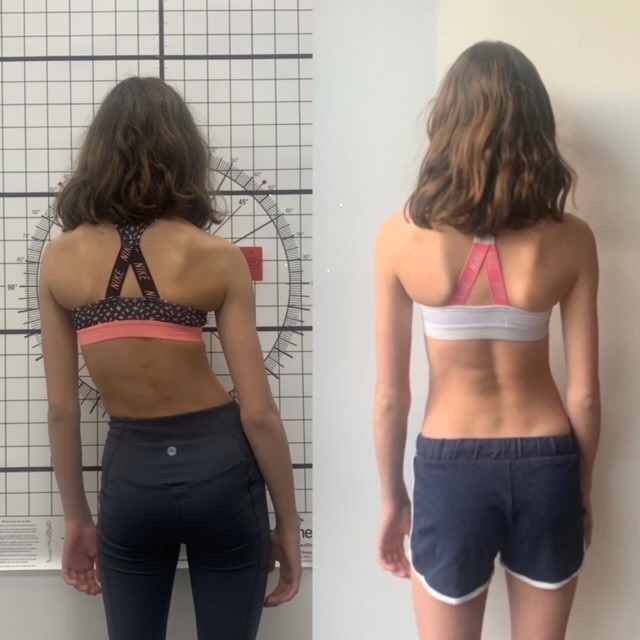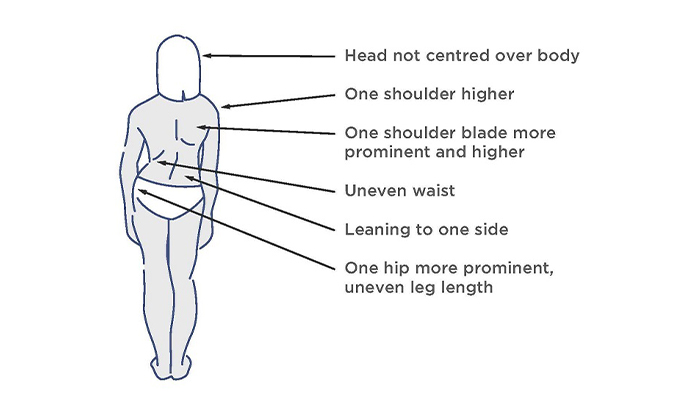
13 June 2022
LOC has been prescribing, manufacturing and fitting its own scoliosis brace since January. It follows the three-dimensional approach to bracing originally developed by Dr Jaques Cheneau in 1979 and since then there have been a number of derivatives, an example being the Gensingen brace. Based on our in-clinic experiences over the last five years, we have developed our own brace with bespoke 3-point pressure systems.
The LOC Scoliosis Brace offers more than 50% skeletal reducing correction; 50% being the accepted target for in-brace correction with modern 3-dimensional braces. Here is just one example of the type of correction we are achieving:
We also expect to see postural improvements within two months of beginning treatment. Here is a pretty dramatic example:

postural change before (left) and after LOC Scoliosis Brace treatment (right)
Find out more information about the LOC Scoliosis Brace
If you think your child, adolescent or adult family member has scoliosis, you can contact LOC directly to arrange a consultation at one of our scoliosis clinics.
Especially in young people, spotting the early signs of scoliosis is important – as is seeking early treatment. These are the warning signs to look out for:

Visual signs of Scoliosis
You can find out more about the visual signs of scoliosis here.
The operation used to treat severe scoliosis curves is typically spinal fusion surgery; a major procedure that involves moving muscles and realigning the skeleton into place. The curved, deformed vertebrae are fused together into a single bone, putting metal screws and rods into the spine to help straighten it. Surgery typically lasts between 4 and 8 hours depending on the severity of the curve. Bone graft is then taken from other parts of the body and used to cover the implants.
Following the operation, it is necessary to spend around a week in intensive care before returning home and the first few days are often uncomfortable. Most adolescents can expect to return to school from 2-4 weeks following surgery, but pain medication may be required up to 6 weeks following. A full recovery from the procedure can take up to a year, as it can take that long for the spine to heal fully.
Spinal fusion surgery causes the fused portion of the back to become permanently stiff, as a result, returning to sports that require large amounts of flexibility (ballet, yoga, gymnastics, dance) or contact (rugby, football, karate, hockey) may take longer.
Risks of spinal fusion surgery are like that of any other major procedure and include infection, blood clots and anaesthesia complications. The added risks include permanent nerve damage to the spine and paralysis.